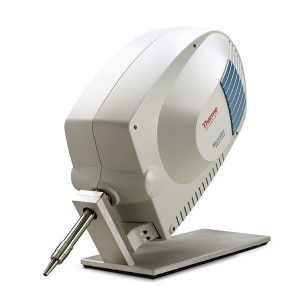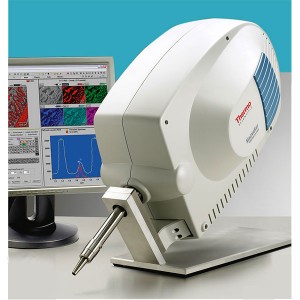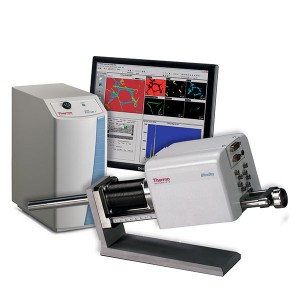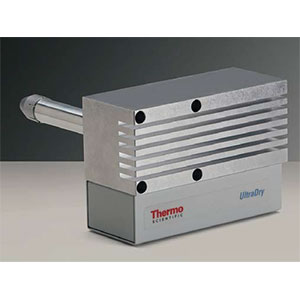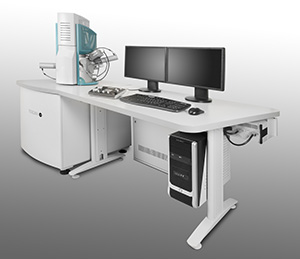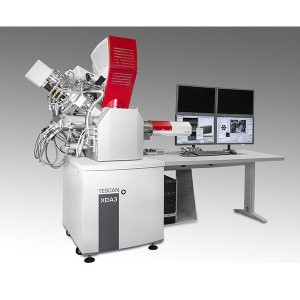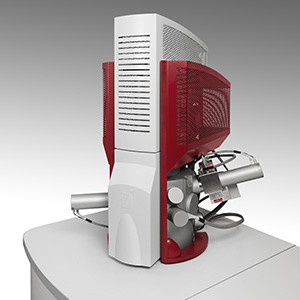MagnaRay WDS Detector – Wavelength Dispersive X-Ray Spectrometer
The MagnaRay WDS system from Thermo Scientific is the first intelligent wavelength dispersive x-ray spectrometer. This means functions like alignment, analysis settings and data acquisition are all taken care of automatically via the in-built expert system. Furthermore, it integrates seamlessly with their EDS system to create the first fully integrated EDS/WDS system.
The MagnaRay integrates with the NORAN System 7 and EDS systems so smoothly that it can automatically determine which elements to analyse for and then performs the WDS analysis, all while the EDS detector is still collecting data. MagnaRay also handles complex tasks such as peak overlap, trace element analysis or accurate quantitative analysis simply and quickly.
High Speed, High Resolution Data
The MagnaRay spectrometer features a revolutionary design incorporating direct drive mechanisms on the diffracting crystals and counter. This enables the detector to change between elements in as little as 0.25 seconds, resulting in multi elemental analysis in the time some WDS detectors are positioning for the first element.
Encoders working in synchronicity with the direct drive system ensure angular precision better than 0.001° ensuring WDS peaks are always correctly located.
SEM Compatibility
The MagnaRay WDS detector is the perfect match for any SEM, extending its analytical capabilities. It uses similar optics to an EDS detector and it extends into the chamber much like an EDS detector and is suited to high performance operating under low beam current and low voltage conditions. It is the ideal choice for scenarios where you require:
- High sensitivity
- Light element detection
- Overlapping peaks
- High peak to background
- High spatial resolution
High Sensitivity
The MagnaRay detector uses a patented technology that uses a focussing optic to transform a divergent x-ray emission into an intense, focussed parallel beam. This beam undergoes Bragg diffraction in one of the diffracting crystals and then further focussing using a polycapillary and grazing incidence optic. This results in excellent count rates at high and low energies.
The system also uses a sealed Xenon proportional counter as opposed to older designs that utilise gas flow proportional counters. This results in a simplified design that streamlines the detection of all elements.
Nanoanalysis
Unlike more traditional WDS systems, the MagnaRay, it allows analytical conditions to be dictated by the sample and not the spectrometer. Nanoscale materials often require analysis to take place with accelerating voltages less than 5kV, a probe diameter less than 10nm and beam current less than 1nA. MagnaRay is more than up to the task making nanoscale materials analysis not only a reality, but also solving issues with sample charging and damage due to high current, high energy WDS, common to many other systems. In addition, MagnaRay is suited to samples where small interaction volume is critical e.g. nanoparticles and thin films.
Quantitative Analysis
Traditionally, quantitative analysis carried out using WDS has required close attention to be paid to parameters such as sample position, beam current and spectrometer setup. MagnaRays embedded expert system looks after all these for you automatically, ensuring accurate quantitative analysis.
X-Ray Maps and Linescans
Traditional EDS Maps and Linescans
Traditional EDS maps and linescans display integrated peak counts that consist of both characteristic elemental x-rays and background Bremsstrahlung x-rays. At low energies, the peak to background ratio can become compromised as the background counts can become quite significant. This results in low contrast maps and linescans.
MagnaRay X-Ray Maps and Linescans
The technology utilised in the MagnaRay produces data with inherently higher peak-to-background ratios. This results in higher contrast x-ray maps and linescans. This is especially suited to detection of materials in low concentrations.
Collection of WDS maps and linescans using the MagnaRay is a very simple procedure. The operator only needs to select an elemental line in the periodic tale within the NORAN system 7 software package. The spectrometer automatically optimises its setting to adapt to those elements.
The MagnaRay WDS integrates completely with the NORAN system 7 software. This means anyone familiar with using the software with EDS detectors, is automatically trained for use with the WDS system.
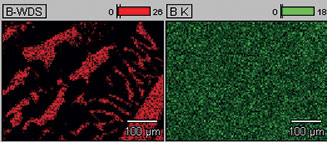
MagnaRay WDS demonstrates the ability to detect and map trace levels of elements. The concentration of Boron in this steel sample is less than 3%. The WDS (red) map clearly shows
contrast in the image as compared to EDS map (green).

